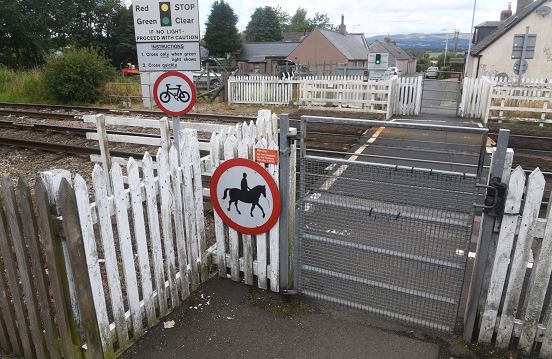A north-east level crossing is set to receive the latest technology to prevent mobile phone-users being “distracted” while they are near the railway line.
The ScotRail Alliance and Network Rail are introducing the new ‘Geo-fencing’ system at high-risk level crossings that warns people to put their phones away before crossing the line.
It will be implemented at the Back Settlement crossing in Laurencekirk.
Figures from Network Rail show young people are more likely to have a near miss at a level crossing during the summer and are more likely to be distracted when crossing – 70% of near misses are due to distraction.
Allan Spence, head of public and passenger safety at Network Rail, said: “Many people are aware of the issue of distraction for drivers, but it is very worrying that so many young adults admit to putting themselves at unnecessary risk by getting distracted when crossing the railway.”
Light nights, coupled with the summer holidays, spell danger for youngsters with August and September seeing near misses at level crossings rise significantly – the top three distractions are friends, headphones and mobile phones.
A total of 29% of young adults admitted to using their mobile phones while crossing the line.
Mr Spence added: “We are investing more than £100million to improve level crossing safety across Britain as part of the Railway Upgrade Plan, but we also need everyone who uses level crossing to do their bit too.
“By paying attention to the warnings at level crossings and avoiding distractions, we can all keep ourselves out of harm’s way.”
Geo-fencing creates a virtual geographic boundary around an area by means of GPS technology. It enables software to trigger a response when a mobile device enters or leaves an area.
The technology is being introduced at nine other Scottish crossings, including Whitelaw and Currie, both near Edinburgh.
Mairi Evans, MSP for Angus and Mearns, said: “I would welcome any introduction of technology which keeps people safe at level crossings – we must not be complacent when safety is concerned.”










